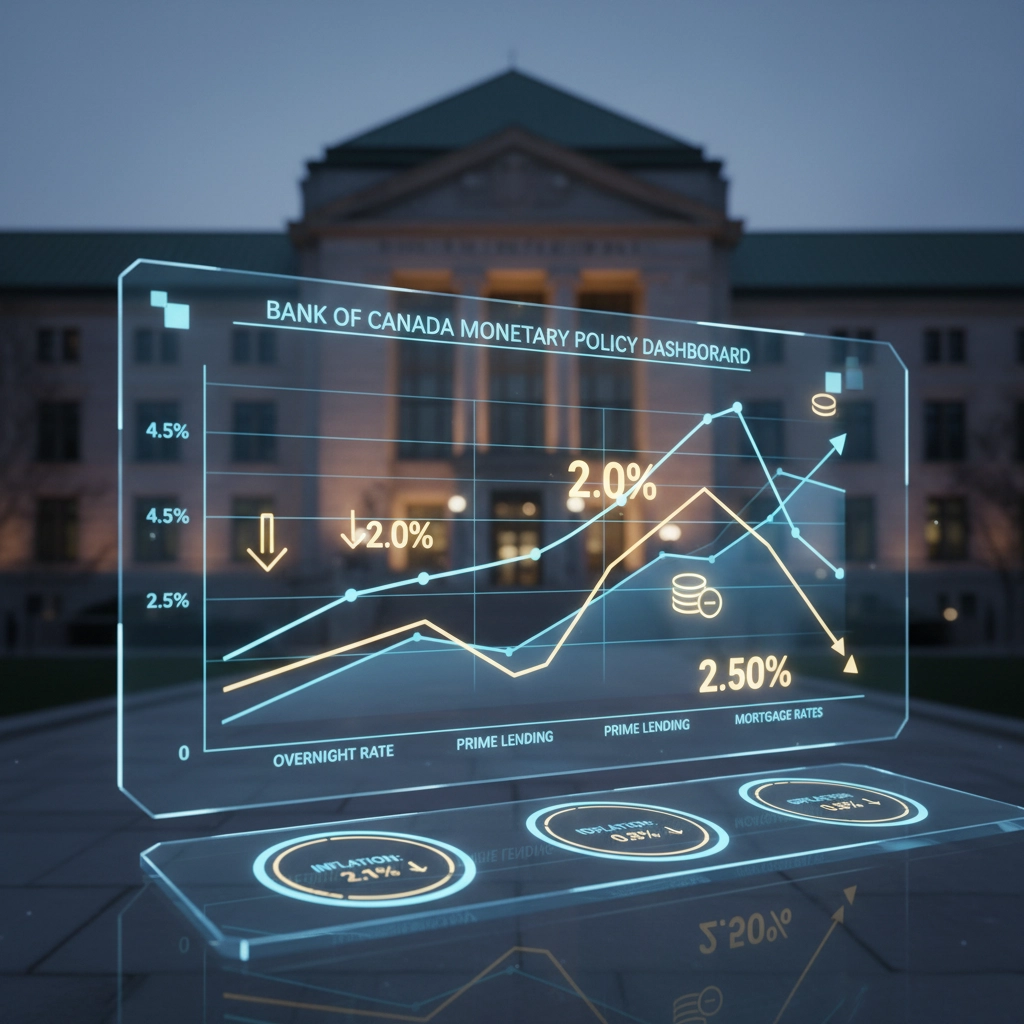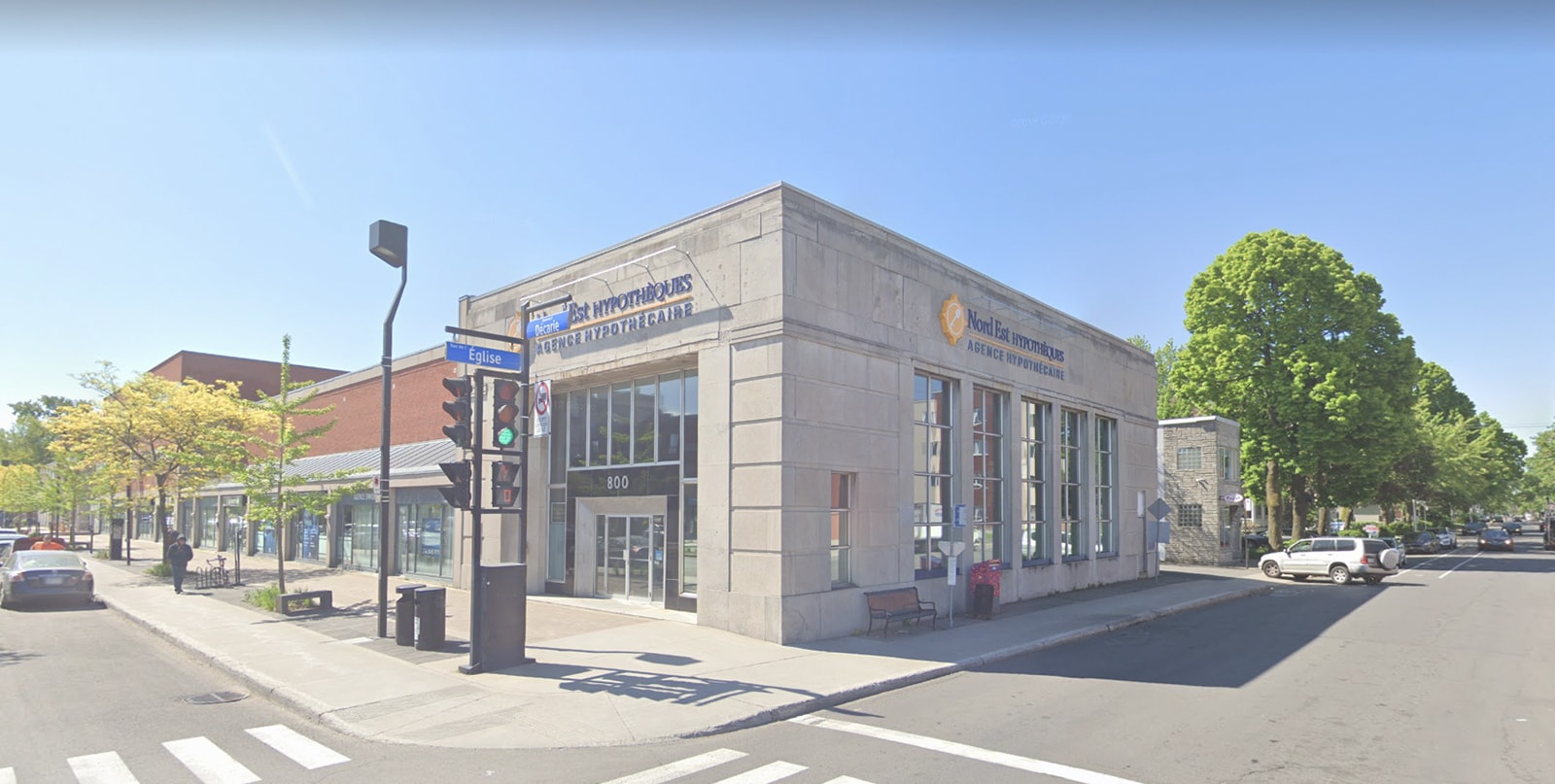As we navigate through October 2025, Canadian homeowners and prospective borrowers find themselves at a pivotal moment in the mortgage landscape; a clear canada lending rate forecast can help guide timely decisions. With the Bank of Canada having reduced its policy rate to 2.5% in September, many are asking the crucial question: should you refinance now or wait for potentially lower rates?
At North East Real Estate & Mortgage Agency, we understand that timing your refinancing decision can significantly impact your financial future. This comprehensive analysis will help you make an informed decision based on current market conditions and expert forecasts.
Current Rate Environment: Where We Stand Today
The Bank of Canada’s decision to cut the policy rate to 2.5% in September 2025 represents a strategic response to Canada’s evolving economic landscape. With the prime rate now sitting at 4.70%, we’re seeing a meaningful shift from the higher rate environment that dominated 2022 and 2023.
Several key factors are driving this monetary policy approach:
- Economic Growth Concerns: Canada’s GDP growth has decelerated to 1.2% in Q2 2025
- Employment Challenges: Rising unemployment rates are putting pressure on household finances
- Inflation Control: With inflation stabilizing at 1.9%, the Bank has room to support economic growth
- Export Weakness: Declining export performance is impacting overall economic momentum
This rate environment creates both opportunities and considerations for Canadian borrowers. The current 2.5% policy rate translates to more favorable borrowing costs compared to recent years, but the question remains whether further cuts are on the horizon.

2025 Rate Forecast: What Experts Are Predicting
Market consensus suggests we’re likely to see additional rate reductions before year-end. Leading financial institutions, including National Bank and TD Economics, are forecasting the Bank of Canada will lower the policy rate to 2.25% by Q4 2025.
Near-Term Rate Expectations
The probability analysis for upcoming Bank of Canada meetings reveals:
- October 29, 2025 Meeting: 51% probability of a 25 basis point cut
- December 10, 2025 Meeting: 35% probability of an additional reduction
- Overall 2025 Outlook: Economists anticipate only two more rate cuts this year
Medium-Term Projections
Looking beyond 2025, the rate trajectory appears relatively stable:
- 2026: Rates expected to remain around 2.25% with possible minor adjustments
- 2027-2030: Gradual increases of approximately 0.25% annually as economic conditions normalize
- Long-term Equilibrium: Rates likely to settle between 3.0% and 3.5%
These projections are based on current economic fundamentals and assume no major economic shocks or policy changes.
The Mortgage Renewal Reality: Understanding the Stakes
Perhaps the most critical aspect of the current rate environment is its impact on mortgage renewals. Approximately 60% of all outstanding mortgages in Canada are scheduled to renew within the next two years. This represents an unprecedented volume of homeowners who will be renewing their mortgages for the first time since the rate increases of 2022.
Payment Impact Analysis
The Bank of Canada’s analysis provides sobering insights into renewal impacts:
2025 Renewals:
- Average monthly payment increases of 10% compared to December 2024
- Fixed-rate mortgage holders facing 15-20% payment increases
- Variable-rate borrowers with variable payments may see 5-7% decreases
2026 Renewals:
- Expected average payment increases of 6%
- Less severe impact due to current rate cuts taking effect

Strategic Refinancing Analysis: Now vs. Later
The Case for Refinancing Now
Rate Certainty: With the current policy rate at 2.5%, borrowers can secure relatively favorable terms without the uncertainty of timing future rate movements. The guaranteed savings available today may outweigh the potential benefits of waiting for modest additional cuts.
Market Stability: Current lending conditions offer more predictable approval processes and product availability compared to the uncertainty that often accompanies periods of rapid rate changes.
Immediate Relief: For homeowners facing payment increases at renewal, acting now provides immediate financial relief and budget certainty.
The Case for Waiting
Potential Additional Savings: If the Bank of Canada cuts rates to 2.25% by December, waiting could provide additional interest savings over the life of your mortgage.
Rate Hold Strategies: Many lenders offer rate holds of 90-120 days, allowing borrowers to secure current rates while potentially benefiting from further cuts.
Economic Uncertainty: Some economists suggest waiting to see how economic indicators develop through the remainder of 2025.
Expert Recommendations by Borrower Profile
Fixed-Rate Mortgage Holders
If you’re currently holding a fixed-rate mortgage set to renew, we strongly recommend acting immediately. The substantial payment increases facing fixed-rate renewals make current rate locks essential. The certainty of securing favorable terms at today’s rates significantly outweighs the speculative benefits of waiting for potentially modest additional cuts.
Key actions to consider:
- Contact your lender to discuss early renewal options
- Compare offerings from multiple lenders
- Consider switching to variable rates if you’re comfortable with payment fluctuations
Variable-Rate Borrowers
Variable-rate mortgage holders have more flexibility in their timing decisions. If you’re already benefiting from recent rate cuts, you may have the luxury of waiting to see if additional cuts materialize. However, monitor these critical factors:
- Your trigger rate and potential payment adjustments
- The stability of your employment and income
- Your risk tolerance for potential rate volatility

First-Time Homebuyers and New Purchasers
The current environment strongly favors taking action for new purchasers. With inventory levels improving and rate certainty providing a more predictable planning environment, waiting for marginal rate improvements may result in missed opportunities in both lending and real estate markets.
Practical Steps for Making Your Decision
1. Assess Your Current Situation
Before making any refinancing decision, conduct a comprehensive review of your financial position:
- Calculate your current monthly payments and projected renewal payments
- Evaluate your employment stability and income growth prospects
- Review your overall debt-to-income ratio
- Consider any major financial changes expected in the next 2-3 years
2. Compare Your Options
Work with a qualified mortgage professional to analyze:
- Current lender renewal offers vs. competitor rates
- Fixed vs. variable rate products
- Different amortization periods and their impact on payments
- Potential penalties for early renewal or switching lenders
3. Consider Timing Strategies
If you decide to wait for potential rate cuts:
- Secure a rate hold with your preferred lender
- Set specific criteria for your decision (e.g., “if rates don’t drop by December 15, I’ll proceed”)
- Have backup plans ready for different rate scenarios
Looking Ahead: Preparing for Various Scenarios
Scenario 1: Rates Drop to 2.25% by Year-End
If this forecast materializes, early adopters will miss approximately 0.25% in potential savings. However, they gain certainty and avoid execution risks associated with timing decisions perfectly.
Scenario 2: No Further Rate Cuts in 2025
In this scenario, borrowers who acted at current rates will have maximized their savings and avoided potential rate increases due to economic improvements or inflation concerns.
Scenario 3: Economic Shock Requires Emergency Rate Cuts
While unlikely, global economic events could accelerate rate cuts beyond current forecasts. Borrowers with variable rates or shorter-term fixed products would benefit most from this scenario.
Making Your Decision: A Framework for Success
The decision to refinance now versus waiting ultimately depends on your individual circumstances, risk tolerance, and financial goals. However, our analysis suggests that for most Canadian borrowers, the current rate environment offers compelling opportunities that outweigh the speculative benefits of waiting.
Priority situations for immediate action:
- Fixed-rate mortgages renewing in the next 6 months
- High-ratio mortgages facing payment shock
- Borrowers with deteriorating credit profiles
- Those planning major life changes (retirement, job changes, etc.)
Consider waiting if:
- You have a rate hold securing current terms
- Your current mortgage has favorable terms lasting beyond 2026
- You have significant cash reserves to manage payment increases
- Your risk tolerance supports timing strategies
The current lending rate environment represents a significant shift from the higher rate period of recent years. While additional cuts may materialize, the certainty and immediate benefits of acting at current rates often outweigh the speculative advantages of perfect timing.
For personalized guidance on your specific situation, I encourage you to consult with our experienced mortgage professionals at North East Real Estate & Mortgage Agency. We’re here to help you navigate these important financial decisions with confidence and clarity.



